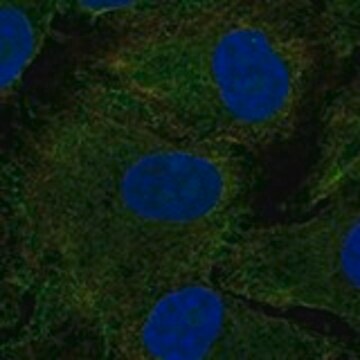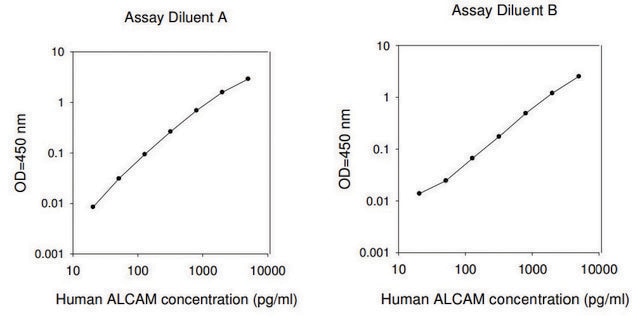MABN1785
Anti-CD166 (ALCAM) Antibody, clone TAG-1A3
clone TAG-1A3, from mouse
Sinonimo/i:
Activated leukocyte cell adhesion molecule, CD166 antigen
About This Item
Prodotti consigliati
Origine biologica
mouse
Livello qualitativo
Forma dell’anticorpo
purified immunoglobulin
Tipo di anticorpo
primary antibodies
Clone
TAG-1A3, monoclonal
Reattività contro le specie
human
Confezionamento
antibody small pack of 25 μL
tecniche
flow cytometry: suitable
immunocytochemistry: suitable
immunofluorescence: suitable
immunoprecipitation (IP): suitable
western blot: suitable
Isotipo
IgG1κ
N° accesso NCBI
N° accesso UniProt
Condizioni di spedizione
ambient
modifica post-traduzionali bersaglio
unmodified
Informazioni sul gene
human ... ALCAM(214)
Categorie correlate
Descrizione generale
Specificità
Immunogeno
Applicazioni
Immunocytochemistry Analysis: A representative lot detected CD166 (ALCAM) in Immunocytochmistry applications (Ding, Y., et. al. (2014). MAbs. 6(6):1439-52).
Immunoprecipitation Analysis: A representative lot detected CD166 (ALCAM) in Immunoprecipitation applications (Ding, Y., et. al. (2014). MAbs. 6(6):1439-52).
Flow Cytometry Analysis: A represetative lot detected CD166 (ALCAM) in human embryonic stem cells, human corneal stromal fibroblast (hCSF) cells, immortalized human corneal endothelial cells (B4G12), and human endothelial cells from donors (2) (Courtesy of Dr. Vanessa Ding, Ph.D. and Dr. Andre Choo, Ph.D, BTI, Singapore).
Immunofluorescence Analysis: A representative lot detected CD166 (ALCAM) in Immunofluorescence applications (Ding, Y., et. al. (2014). MAbs. 6(6):1439-52).
Western Blotting Analysis: A representative lot detected CD166 (ALCAM) in Western Blotting applications (Ding, Y., et. al. (2014). MAbs. 6(6):1439-52).
Neuroscience
Qualità
Isotyping Analysis: The identity of this monoclonal antibody is confirmed by isotyping test to be human IgG1 .
Descrizione del bersaglio
Stato fisico
Stoccaggio e stabilità
Altre note
Esclusione di responsabilità
Not finding the right product?
Try our Motore di ricerca dei prodotti.
Codice della classe di stoccaggio
12 - Non Combustible Liquids
Classe di pericolosità dell'acqua (WGK)
WGK 1
Certificati d'analisi (COA)
Cerca il Certificati d'analisi (COA) digitando il numero di lotto/batch corrispondente. I numeri di lotto o di batch sono stampati sull'etichetta dei prodotti dopo la parola ‘Lotto’ o ‘Batch’.
Possiedi già questo prodotto?
I documenti relativi ai prodotti acquistati recentemente sono disponibili nell’Archivio dei documenti.
Il team dei nostri ricercatori vanta grande esperienza in tutte le aree della ricerca quali Life Science, scienza dei materiali, sintesi chimica, cromatografia, discipline analitiche, ecc..
Contatta l'Assistenza Tecnica.







